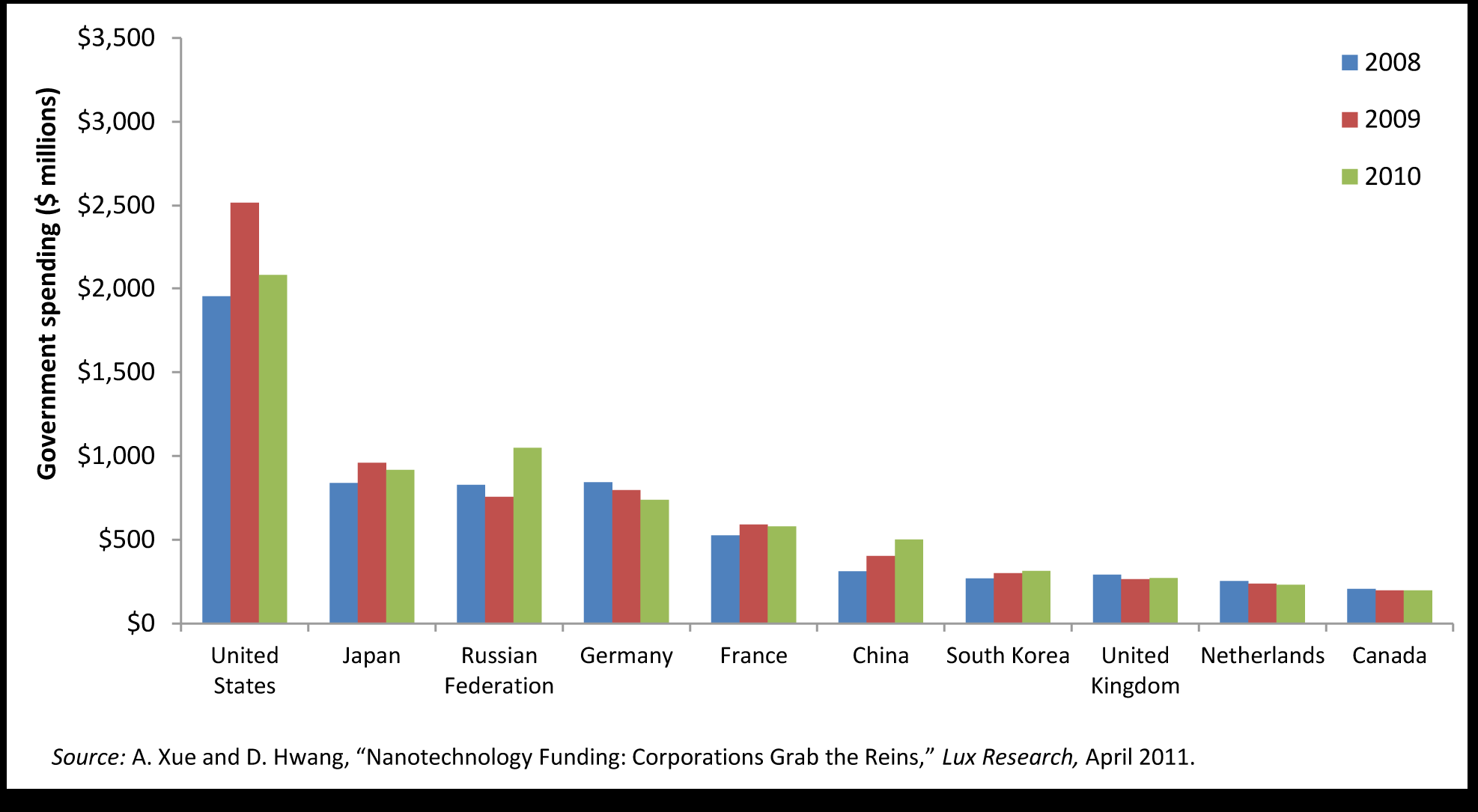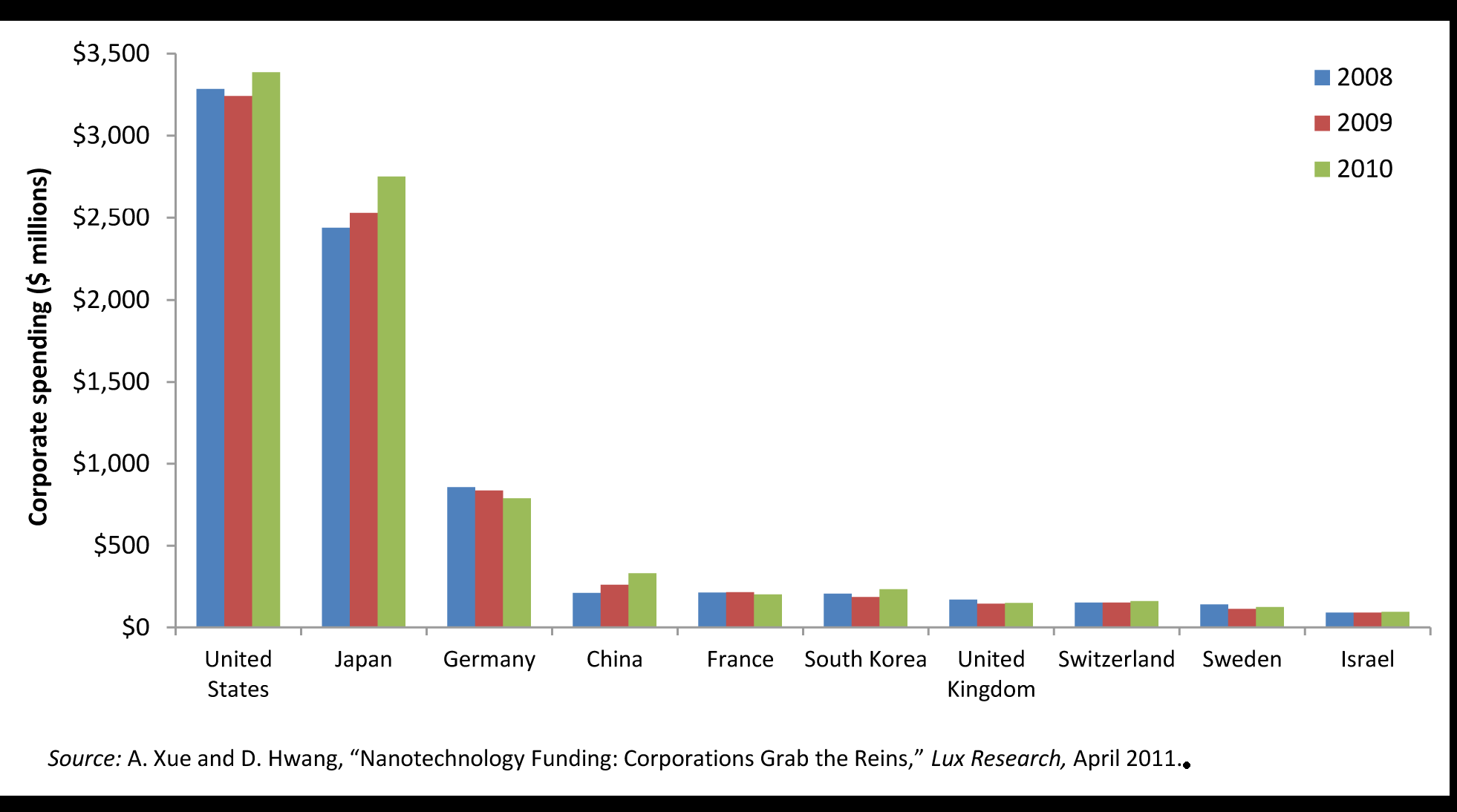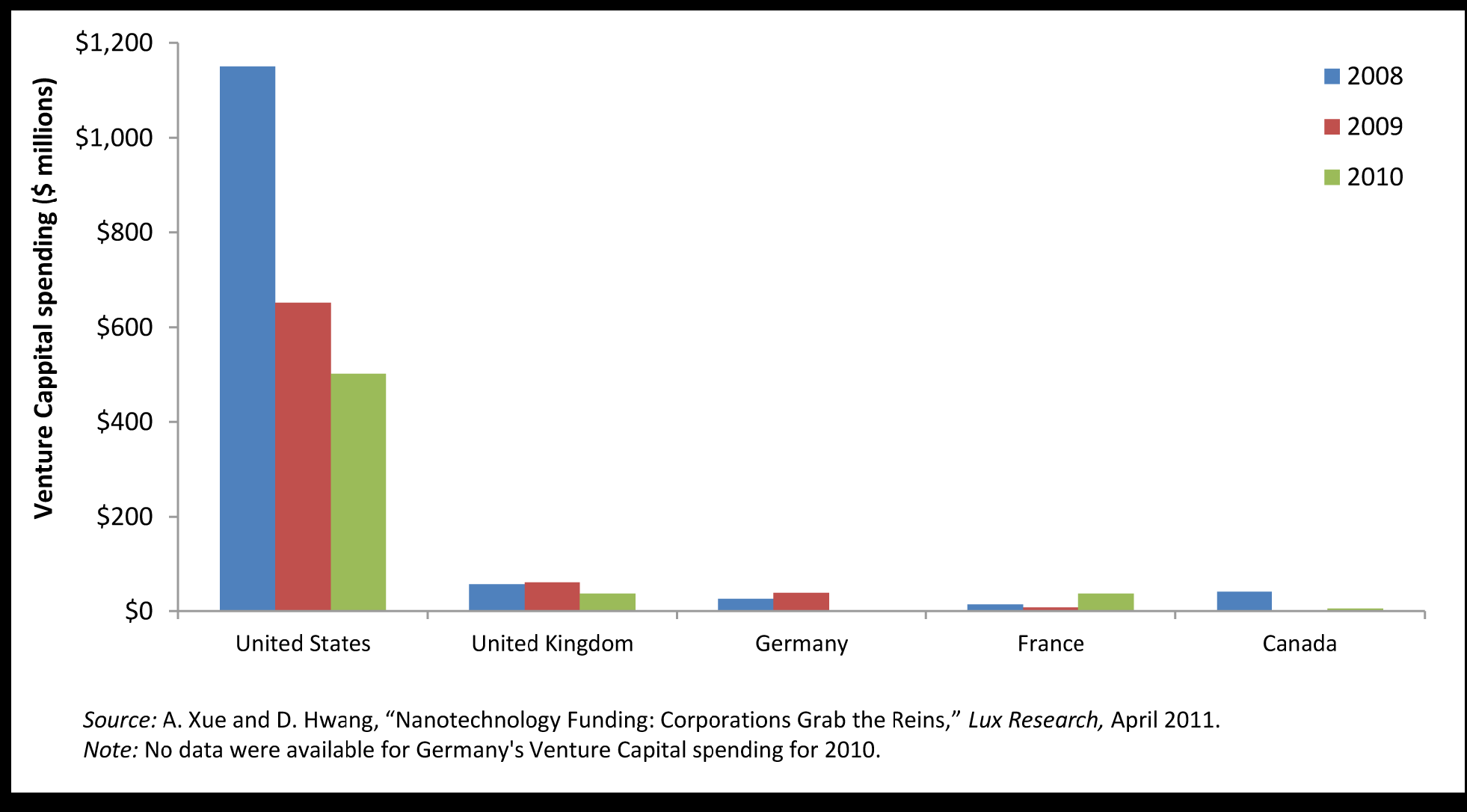The scene around nanotechnology regulatory frameworks has been frantic (by comparison with any other time period during the 3 years I’ve been blogging about nano) in the last month or so. This is my second attempt this month at pulling together information about nanotechnology regulatory frameworks (my June 9, 2011 posting).
I’ll start off slow and easy with this roundup of sorts with a brief look at the international scene, move on to US initiatives, offer a brief comment on the Canadian situation, and wrap up with Europe.
International
Dr. Andrew Maynard at the University of Michigan Risk Science Center (UMRSC) blog has written a commentary about the ISO’s (*International Organization for Standardization) latest set of nanotechnology guidelines in his May 27, 2011 posting. From the posting,
ISO/TR 31321:2011: Nanotechnologies – Nanomaterial risk evaluation is unashamedly based on the Environmental Defense Fund/DuPont Nano Risk Framework. Much of the structure and content reflects that of the original – a testament to the thought and effort that went into the first document. …The ISO report is written in a much tighter style than that of the original document, and loses some of the occasionally long-winded expositions on what should be done and why. And the ISO document is more compact – 66 pages as opposed to 104. But from a comparative reading, surprisingly little has been changed from the 2007 document.
It’s build around a framework of six steps:
- describe materials and applications
- material profiles
- evaluate risks
- assess risk management options
- decide, document, and act
- review and adapt
From the posting,
Inherent to this framework is the need to make situation-specific decisions that are guided by the Technical Report but not necessarily prescribed by it, and the need to constantly review and revise procedures and decisions. This built-in flexibility and adaptability makes ISO/TR 31321 a powerful tool for developing tailored nanomaterial management strategies that are responsive to new information as it becomes available. It also presents an integrative approach to using materials safely, that deals with the need to make decisions under considerable uncertainty by blurring the line between risk assessment and risk management.
Andrew’s view of these guidelines is largely positive and you can get more details and history by viewing his original commentary. (I first mentioned these new ISO guidelines in my May 18, 2011 posting.)
Sticking with the international scene (in this case, ISO), there was a June 13, 2011 news item on Nanowerk about a new ISO general liability classification for nanotechnology and alternative energy (from the news item),
The new classifications to address the growing use of nanotechnology are Nanomaterial Distributors and Nanomaterial Manufacturing. The once-limited use of nanotechnology in electronics and information technology industries is now swiftly permeating the consumer marketplace, from cosmetics to clothing and more. The Nanomaterial Distributors classification applies to risks that sell nanomaterials to others, and the Nanomaterial Manufacturing classification applies to risks that manufacture or engineer nanomaterials for others.
“With heightened interest to reduce the carbon footprint, establish energy independence, and increase the use of renewable resources, alternative power is a priority for many,” said Beth Fitzgerald, vice president of commercial lines and modeling at ISO. “In response to the growing demand for alternative energy, ISO introduced classifications for risks in three main areas: biofuels, solar energy, and wind energy. The new classifications will allow for future evaluation of the loss experience of those emerging markets.”
The biofuels classifications consist of Biofuels Manufacturing and Biofuels Distributors. Since ethanol already has a widespread and accepted use, a further distinction is made between “ethanol” and “biofuels other than ethanol.”
The solar energy classifications include Solar Energy Farms, Solar Energy Equipment Dealers or Distributors, and Solar Energy Equipment Manufacturing. The wind energy classifications include Wind Turbine Contractors – Installation, Service, or Repair and onshore and offshore Wind Farms.
* I have for many years understood that ISO is the International Standards Organization and I see from a note on the UMRSC blog that these days it is the International Organization for Standardization.
US
On the US front, three different agencies have made announcements that in one way or another will have an impact on the nanotechnology regulatory frameworks in that country.
The White House Emerging Technologies Interagency Policy Coordination Committee (ETIPC) recently released a set of principles for the regulation and oversight of nanotechnology applications and guidance for the development and implementation of policies at the agency level. From the June 9, 2011 news item on Nanowerk,
The realization of nanotechnology’s full potential will require continued research and flexible, science-based approaches to regulation that protect public health and the environment while promoting economic growth, innovation, competitiveness, exports, and job creation.
In furtherance of those goals, the White House Emerging Technologies Interagency Policy Coordination Committee (ETIPC) has developed a set of principles (pdf) specific to the regulation and oversight of applications of nanotechnology, to guide the development and implementation of policies at the agency level.
These principles reinforce a set of overarching principles (pdf) for the regulation and oversight of emerging technologies released on March 11, 2011. They also reflect recommendations from a report on nanotechnology (pdf) by the President’s Council of Advisors on Science and Technology. The report encourages Federal support for the commercialization of nanotech products and calls for the development of rational, science- and risk-based regulatory approaches that would be based on the full array of a material’s properties and their plausible risks and not simply on the basis of size alone.
You can read more about the guidelines at Nanowerk or on the Environemental Expert website here.
Back over on the UMRSC blog, Dr. Andrew Maynard had these comments in his June 13, 2011 posting,
In a joint memorandum, the Office of Science and Technology Policy, the Office of Management and Budget and the Office of the United States Trade Representative laid out Policy Principles for the U.S. Decision Making Concerning Regulations and Oversight of Applications of Nanotechnology and Nanomaterials.
…
Reading through it, a number of themes emerge, including:
- Existing regulatory frameworks provide a firm foundation for the oversight of nanomaterials, but there is a need to respond to new scientific evidence on potential risks, and to consider administrative and legal modifications to the regulatory landscape should the need arise.
- Regulatory action on nanomaterials should be based on scientific evidence of risk, and not on definitions of materials that do not necessarily reflect the evidence-based likelihood of a material causing harm.
- There should be no prior judgement on whether nanomaterials are intrinsically benign or harmful, in the absence of supporting scientific evidence.
- Transparency and communication are important to ensuring effective evidence-based regulation.
Overall, this is a strong set of policy principles that lays the groundwork for developing regulation that is grounded in science and not swayed by speculative whims, and yet is responsive and adaptive to emerging challenges. Gratifyingly, the memorandum begins to touch on some of the concerns I have expressed previously about approaches to nanomaterial regulation that seem not to be evidence-based. There is a reasonable chance that they will help move away from the dogma that engineered nanomaterials should be regulated separately because they are new, to a more nuanced and evidence-based approach to ensuring the safe use of increasingly sophisticated materials. Where it perhaps lacks is in recognizing the importance of other factors in addition to science in crafting effective regulation, and in handling uncertainty in decision making.
June 9, 2011 was quite the day as in addition to the White House documents, the US Environmental Protection Agency (EPA) and the US Food and Drug Administration (FDA) both announced public consultations on nanotechnology regulation.
From the June 9, 2011 news item on Nanowerk about the US EPA public consultation,
The U.S. Environmental Protection Agency announced today it plans to obtain information on nanoscale materials in pesticide products. Under the requirements of the law, EPA will gather information on what nanoscale materials are present in pesticide products to determine whether the registration of a pesticide may cause unreasonable adverse effects on the environment and human health. The proposed policy will be open for public comment.
“We want to obtain timely and accurate information on what nanoscale materials may be in pesticide products, “said Steve Owens assistant administrator for EPA’s Office of Chemical Safety and Pollution Prevention. “This information is needed for EPA to meet its requirement under the law to protect public health and the environment.”
…
Comments on the Federal Register notice will be accepted until 30 days after publication. The notice will be available at www.regulations.gov in docket number EPA–HQ–OPP–2010-0197. More information or to read the proposed notice: http://www.epa.gov/pesticides/regulating/nanotechnology.html [Pesticides; Policies Concerning Products Containing Nanoscale Materials; Opportunity for Public Comment]
The US FDA has taken a more complicated approach to its public consultation with two notices being issued about the same consultation. The June 9, 2011 news item on Nanowerk had this to say,
The U.S. Food and Drug Administration today released draft guidance to provide regulated industries with greater certainty about the use of nanotechnology, which generally involves materials made up of particles that are at least one billionth of a meter in size. The guidance outlines the agency’s view on whether regulated products contain nanomaterials or involve the application of nanotechnology.
…
The draft guidance, “Considering Whether an FDA-Regulated Product Involves the Application of Nanotechnology”, is available online and open for public comment. It represents the first step toward providing regulatory clarity on the FDA’s approach to nanotechnology.
Specifically, the agency named certain characteristics – such as the size of nanomaterials used and the exhibited properties of those materials – that may be considered when attempting to identify applications of nanotechnology in regulated products.
“With this guidance, we are not announcing a regulatory definition of nanotechnology,” said Margaret A. Hamburg, MD, Commissioner of Food and Drugs. “However, as a first step, we want to narrow the discussion to these points and work with industry to determine if this focus is an appropriate starting place.”
Then there was a June 15, 2011 news item on Nanowerk offering more details about the draft guidance announcement of June 9, 2011,
The guidelines list things that might be considered when deciding if nanotechnology was used on a product regulated by FDA—including the size of the nanomaterials that were used, and what their properties are.
And FDA wants industry leaders and the public to weigh-in.
Nanotechnology—the science of manipulating materials on a scale so small that it can’t be seen with a regular microscope—could have a broad range of applications, such as increasing the effectiveness of a particular drug or improving the packaging of food or cosmetics. “Nanotechnology is an emerging technology that has the potential to be used in a broad array of FDA-regulated medical products, foods, and cosmetics,” says Carlos Peña, director of FDA’s emerging technology programs. “But because materials in the nanoscale dimension may have different chemical, physical, or biological properties from their larger counterparts, FDA is monitoring the technology to assure such use is beneficial.”
In other words, using nanotechnology can change the way a product looks or operates, Peña says.
Although the technology is still evolving, it’s already in use as display technology for laptop computers, cell phones, and digital cameras. In the medical community, a number of manufacturers have used nanotechnology in:
- Drugs
- Medical imaging
- Antimicrobial materials
- Medical devices
- Sunscreens
Andrew Maynard in his previously noted June 13, 2011 posting on on the UMRSC blog had this to say about the EPA’s draft document,
This is a long and somewhat convoluted document, that spends some time outlining what the agency considers is an engineered nanomaterial, and reviewing nanomaterial hazard data.
Reading the document, EPA still seems somewhat tangled up with definitions of engineered nanomaterials. After outlining conventional attributes associated with engineered nanomaterials, including structures between ~1 – 100 nm and unique or novel properties, the document states,
“These elements do not readily work in a regulatory context because of the high degree of subjectivity involved with interpreting such phrases as “unique or novel properties” or “manufactured or engineered to take advantage of these properties” Moreover the contribution of these subjective elements to risk has not been established.”
This aligns with where my own thinking has been moving in recent years. Yet following this statement, the document reverts back to considering nanoparticles between 1 – 100 nm as the archetypal nanomaterial, and intimates “novel” properties such as “larger surface area per unit volume and/or quantum effects” as raising new risk concerns.
Canadian segue
I’ll point out here that Health Canada’s Interim Policy definition also adheres to the 1 to 100 nm definition for a nanomaterial, a concern I expressed in my submission to the public consultation held last year. Interestingly, since 29 submissions does seem particularly daunting to read there has yet to be any public response to these submissions. Not even a list of which agencies and individuals made submissions.
Back to US
Andrew also comments on the FDA document,
The FDA Guidance for Industry: Considering Whether an FDA-Regulated Product Involves the Application of Nanotechnology is a very different kettle of fish to the EPA document. It is overtly responsive to the White House memo; it demonstrates a deep understanding of the issues surrounding nanotechnology and regulation; and it is mercifully concise.
To be fair, the scope of the draft guidance is limited to helping manufacturers understand how the agency is approaching nanotechnology-enabled products under their purview. But this is something it does well.
One of the more significant aspects of the guidance is the discussion on regulatory definitions of nanomaterials. Following a line of reasoning established some years ago, the agency focuses on material properties rather than rigid definitions:
“FDA has not to date established regulatory definitions of “nanotechnology,” “nanoscale” or related terms… Based on FDA’s current scientific and technical understanding of nanomaterials and their characteristics, FDA believes that evaluations of safety, effectiveness or public health impact of such products should consider the unique properties and behaviors that nanomaterials may exhibit”
I recommend reading the full text of Andrew’s comments.
Europe
Meanwhile, there was a June 10, 2011 news item on Nanowerk about the availability of 28 presentations from a May 10-12, 2011 joint European workshop hosted by the Engineered NanoParticle Risk Assessment (ENPRA) FP (Framework Programme) 7 project and the European Commission’s Joint Research Centre. From the news item about the Challenges of Regulation and Risk Assessment of Nanomaterials workshop,
Twenty-eight presentations delivered at the Joint JRC Nano event and 2nd ENPRA Stakeholders Workshop are now available on-line: ENPRA Workshop 2011 – Programme with Presentations.
…
The workshop (by invitation only) involved about 90 participants, from industry, government, NGOs, and academia. …
During two days and a half, 34 experts from 26 different organisations informed the participants on the latest scientific progress in the field of nanoparticles risk assessment produced within national and European projects, and first results of ENPRA FP7 project were presented in detail. In addition, recent developments concerning legislation in the EU and beyond were discussed.
Amongst other participants, you can include representatives of EU Associate and Candidate Countries, environment and workers’ protection organisations, CAIQ (Chinese Academy of Inspection and Quarantine), US-EPA, ECHA, and EFSA.
To close this piece (and I want to do that very badly), I’m going to give Tim Harper at his TNT blog (on the Cientifica website) the final word from his June 10, 2011 posting,
The White House Emerging Technologies Interagency Policy Coordination Committee (ETIPC) has developed a set of principles (pdf) specific to the regulation and oversight of applications of nanotechnology, to guide the development and implementation of policies at the agency level.
I’m glad to see that it addresses those two old bugbears, the confusion between risk and hazard and the prejudging of issues without reference to scientific evidence …
It is an approach which appears to diverge slightly from the European adoption of the precautionary principle …
As with any regulation, the problems will arise not from the the original wording, but through its (mis)interpretation and inconsistent application.


